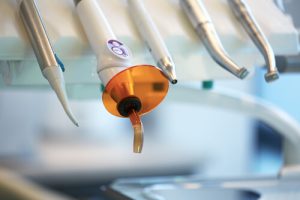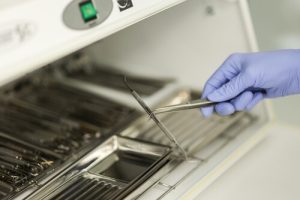Navigating the complex world of dental surgical instruments is crucial for any dental professional aiming for efficiency and excellence in practice. From elevators and forceps to chisels and curettes, understanding the purpose, design, and proper usage of these tools can dramatically affect both the success of surgical procedures and patient comfort. This comprehensive guide serves as a resource for dental surgeons, hygienists, and students who are keen to master the intricacies involved in selecting, sterilizing, and employing these vital instruments. Armed with this knowledge, dental professionals can perform procedures with greater confidence and accuracy.
Anatomy of Dental Surgical Instruments
Understanding the basic components that make up dental surgical instruments is essential for effective usage and maintenance. Here’s a breakdown of the key components often found in these tools:
Handles
- Grip Area: This is the part of the instrument that the dental professional holds. It is designed for easy grip and maneuverability.
- Knurling: Patterns on the grip area to provide better control and reduced slippage.
Working Ends
- Blades or Tips: The part of the instrument that interacts directly with the tooth or gum tissue. It varies in shape and size, depending on the specific function.
- Cutting Edges: Found in some instruments like scalers and curettes, these are designed to cut or scrape away material.
Shanks
- Straight Shanks: These are straight rods connecting the handle to the working end.
- Angled Shanks: These have angles to reach less accessible areas of the mouth.
Joints and Hinges
- Box Lock: Commonly found in forceps and needle holders, this joint allows for precise control.
- Screw Joint: Another type of joint used in some instruments for adding adjustable tension.
Material
- Stainless Steel: Most commonly used due to its resistance to corrosion.
- Carbon Steel: Used for sharper blades but prone to rust.
- Titanium: Lightweight and extremely durable but more expensive.
Calibration
- Markings: Some instruments come with calibration markings to measure depth or width during procedures.
Understanding these components will help dental professionals use their instruments more effectively, ensure proper sterilization, and contribute to the longevity and maintenance of the tools.
 Types of Dental Surgical Instruments and Their Uses
Types of Dental Surgical Instruments and Their Uses
The array of dental surgical instruments available is vast, each designed for a specific purpose and procedure. These dental surgical instruments can examine, treat, manipulate, restore, and remove teeth and surrounding oral structures. Familiarity with these tools is essential for dental professionals, as it contributes to the efficiency and effectiveness of dental surgeries. Here are some of the key types of dental surgical instruments and their uses:
Elevators
- Straight Elevators: Used to loosen teeth from periodontal ligaments before extracting teeth.
- Periosteal Elevators: Used to lift the mucoperiosteal flap off the bone during surgical procedures.
Forceps
- Extraction Forceps: Designed to extract teeth from the alveolar bone.
- Hemostatic Forceps: Used to control bleeding by clamping onto a bleeding vessel.
Scalers and Curettes
- Universal Scalers: General tools used for removing dental plaque.
- Curettes: Utilized for deep scaling, root planning, and periodontal debridement.
Retractors
- Mouth Retractors: Help in holding the mouth open during surgical procedures.
- Tissue Retractors: Used to move aside and hold soft tissue during surgeries.
Surgical Burs and Drills
- Diamond Burs: Used for high-precision cutting and are generally long-lasting.
- Carbide Burs: Used for removing bone or tooth material quickly.
Sutures and Needle Holders
- Absorbable Sutures: Generally used for internal suturing.
- Non-Absorbable Sutures: Used for external suturing, requiring removal post-surgery.
- Needle Holders: Specialized pliers are used to hold the suturing needle during stitching.
Chisels, Files, and Raspatories
- Bone Chisels: Used to remove or shape bone.
- Bone Files: Used to smooth bone surfaces following a cut.
- Raspatories: Used to separate tissues from bone or teeth.
Aspirators and Suction Tips
- Saliva Ejectors: Low-volume aspirators used to remove saliva.
- Surgical Aspirators: High-volume aspirators are used to remove blood and debris from the surgical site.
Understanding the types and uses of dental surgical instruments is vital for any dental professional. This knowledge not only allows for improved patient care but also contributes to the overall success and efficiency of dental surgical procedures.
 Connection between the instruments and the dental compressor
Connection between the instruments and the dental compressor
The dental compressor plays a vital role in powering various dental instruments, and it’s often considered the “heart” of a dental practice. This machine provides compressed air that is used to operate a range of pneumatic (air-driven) dental tools and systems, ensuring that they function optimally. Here’s how the dental compressor connects to the use of dental instruments:
Air/Water Syringes
The dental compressor supplies air and water to syringes used for rinsing and drying a patient’s mouth during procedures. Precise control of air and water flow is crucial for patient comfort and the effectiveness of the procedure.
High-Speed and Low-Speed Handpieces
Dental drills, whether they are high-speed for cutting and grinding or low-speed for polishing, rely on compressed air for their operation. The air drives the turbine inside the handpiece, enabling it to rotate at the desired speed.
Scalers and Polishers
Ultrasonic scalers and air polishers also often rely on compressed air to function. The compressor ensures that these instruments receive a consistent air supply for effective plaque and calculus removal.
Suction Systems
While some suction systems have their own vacuum pumps, some models use compressed air to create the vacuum for suction. Effective suction is crucial for keeping the field clear and for patient safety during procedures.
Sterilization Equipment
Some autoclaves use compressed air to assist in the drying cycle, making sure that dental instruments are not only sterilized but also ready for safe storage.
Quality of Air
It’s essential for the air from the compressor to be of medical grade and free from contaminants. This ensures that the compressed air meets safety standards and will not compromise the sterility of the dental instruments or harm patients in any way.
Reliability and Maintenance
Having a reliable dental compressor is crucial, as a malfunction could disrupt a range of dental procedures. Regular maintenance of the compressor is also vital to ensure the longevity and efficacy of the dental instruments it powers.
Understanding the connection between dental instruments and the dental compressor underscores the importance of selecting a high-quality compressor and maintaining it well. Doing so will not only contribute to the efficacy of your dental instruments but also to the overall success of your dental practice.
Sterilization and Maintenance
Sterilization and maintenance of every dental instrument are critical aspects of dental healthcare. Properly sterilized instruments are essential for patient safety, while well-maintained tools can serve effectively for years. Below are the key points regarding the sterilization and maintenance of these essential tools in dental clinics:
Sterilization Methods
- Autoclaving: The most commonly used method, autoclaving, involves the use of high-pressure steam at a high temperature for a specific period to kill all bacteria, viruses, and spores. The instrument needs to be pre-cleaned and bagged in sterilization pouches before the process.
- Chemical Sterilants: Some heat-sensitive instruments may be sterilized using high-level disinfectants and chemical sterilants. However, these methods might not eliminate all spores and should be used only when absolutely necessary.
- Dry Heat Ovens: Another option for instruments that may rust dry heat sterilization involves longer exposure to a high temperature without the use of moisture.
- Ethylene Oxide Gas: This method is usually reserved for heat-sensitive and delicate instruments. However, it is less commonly used in dental settings due to its longer cycle time and the need for aeration post-sterilization.
 Maintenance Tips
Maintenance Tips
- Regular Inspection: Instruments should be checked regularly for wear and tear. Damaged or worn-out instruments should be replaced immediately to ensure the safety and effectiveness of procedures.
- Manual Cleaning: Pre-soak the instruments in enzymatic cleaners to loosen debris, then manually scrub them with a soft-bristle brush under running water before placing them in an ultrasonic cleaner for further cleaning.
- Lubrication: Some instruments, like forceps with box locks or hinges, may require lubrication post-cleaning and before sterilization to maintain smooth operation.
- Storage: Sterilized instruments should be stored in a dry, clean environment to prevent recontamination. Sealed sterilization pouches should be used to keep them sterile until their next use.
- Documentation: Always document sterilization cycles, including date, temperature, and operator name, to maintain a thorough record for compliance and safety audits.
References:
https://www.klsmartin.com/en/products/surgical-instruments/instruments-for-dental-and-oral-surgery/
https://www.dentaltix.com/en/blog-surgical-instruments-dental-clinic-most-complete-buying-guide
https://www.henryschein.com/assets/Medical/3175811.pdf



